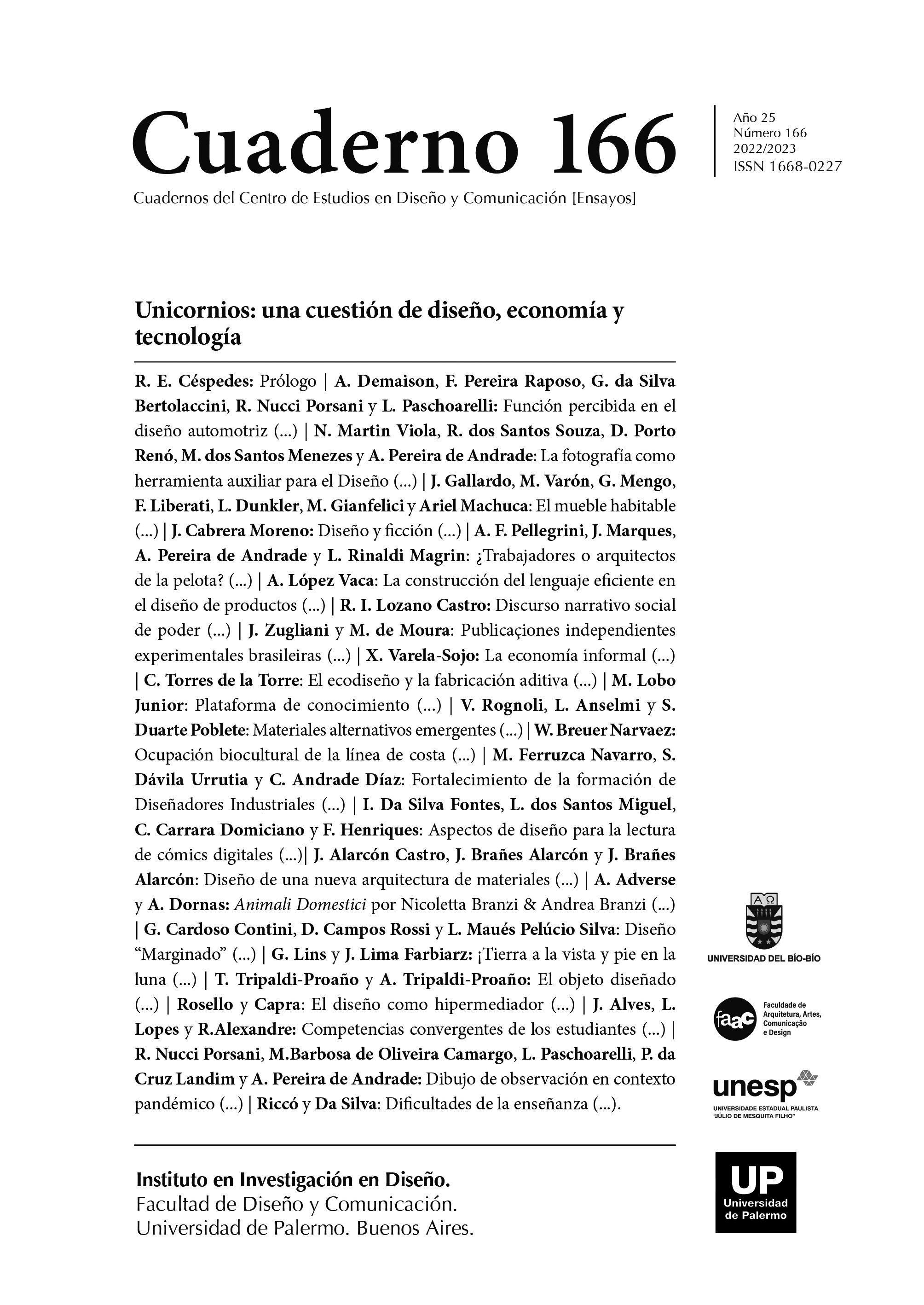La construcción del lenguaje eficiente en el diseño de productos. Caso micromovilidad
Abstract
The design discourse is one of several currently competing for hegemony in a postmodern world. The textual culture on which industrial design participate seeks to generate increasingly sophisticated and emotional objects. On the one hand, abstraction and constant efficiency are sought, and on the other, the sensitization of the senses through the qualitative. The need to aestheticize everything and at the same time to achieve efficiency currently coexist omnipresently. This paper reflects on the construction of the term efficiency today, for which historical events that have been affecting, contributing and consensing its meaning and aesthetic representation in industrial design are related. In this way, it seeks to understand the similarities and differences that have been structuring the efficient language. Specifically, the criteria for the composition and use of micromobility artifacts are mentioned as a case study to understand the role of design in the intertextuality in which it operates.
References
Athavankar, U. A. (1989). Categorization... Natural Language and Design. Design Issues, 5(2), 12. https://doi.org/10.1016/0003-6870(75)90022-8
Barthes, R. (1994). La aventura semiológica (E. Paidos (Ed.); 2nd ed.). Ediciones Paidos. http://ccuc.cbuc.cat/record=b4181672~S23*cat
Baudrillard, J. (1969). El sistema de los objetos. Siglo XXI.
Eitner, L. (1957). Design in Postwar Germany. Design Quarterly, 40, 1–27.
Hayes, R. (2021). The big book of tiny cars (1st ed.). Motorbooks.
Inglis, D. (2004). Auto Couture: Thinking the Car in Post-War France. Theory, Culture & Society, 21(5), 197–219. https://doi.org/10.1177/0263276404046067
Judt, T. (2005). Postwar: A History of Europe since 1945. In The Pinguin Press (1st ed.). Penguin Books.
Lipovetsky, G. (1996). El imperio de lo efímero (5th ed.). Editorial Anagrama.
López, A. (2021). Objetos de movilidad eléctrica contemporánea : El resurgir de los bubblecars de la posguerra. Actas de Diseño, 36, 312–315.
Milward, A. S. (2000). The European rescue of nation-state. (2nd ed.). Routledge.
Morris, D. Z. (2014). Cars with the Boom: Identity and territory in american postwar automobile sound. Technology and Culture, 55(2), 326–353. https://doi.org/10.1353/tech.2014.0059
Norman, D. A. (2007). The Design of Future Things: Cautious Cars: Basic Books. https://doi.org/10.17077/drivingassessment.1205
Rosponi, C. (2008). Macchinette. Le bubblecars nel Design del Novecento. Archimagazine. http://www.archimagazine.com/xbubblecars.htm
Los autores/as que publiquen en esta revista ceden los derechos de autor y de publicación a "Cuadernos del Centro de Estudios de Diseño y Comunicación", Aceptando el registro de su trabajo bajo una licencia de atribución de Creative Commons, que permite a terceros utilizar lo publicado siempre que de el crédito pertinente a los autores y a esta revista.


